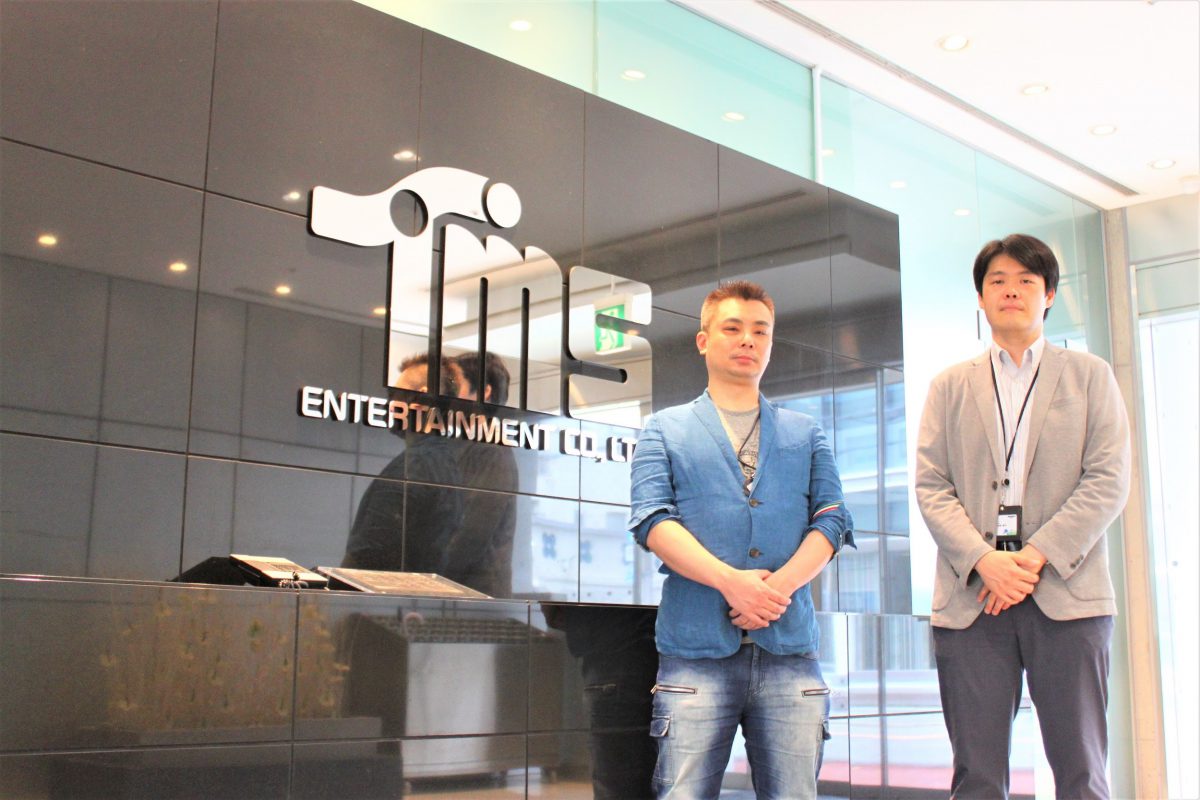
【Interview】 Joint development project between TMS Entertainment, Inc. and RenderPool™.
Morgenrot, inc. (hereafter referred to as “we”) is developing software (scene assembly software) for Render Pool in collaboration with TMS Entertainment, Inc.
Therefore, we interviewed two people in charge of the project in June 2020 to introduce our company and TMS Entertainment’s efforts.
- Mr. Kohei Ito, General Manager, Digital Promotion Office, TMS Entertainment, Inc.
- Mr. Ryouta Takano, Visual Effects/CGI Read Supervisor
About TMS Entertainment, Inc.
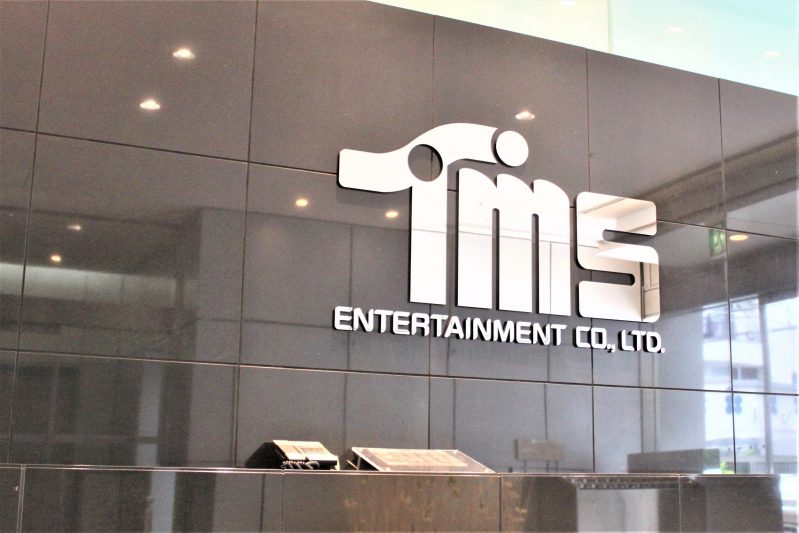
First, we asked for an overview of TMS Entertainment, Inc.
Can you tell us about your company’s business?
(Ito)We are a comprehensive animation production company that operates in the “animation production business,” “video licensing business,” and “content business.
Our representative works include “Detective Conan,” “Anpanman,” and “Lupin the Third,” and we are also involved in a variety of other animation productions.We also develop content business and sell goods through our web store.

TMS Group subsidiaries include Telecom Animation Film Corporation (“Telecom Animation Film”), a comprehensive animation production company.
I have worked as a producer at Telecom Animation Film until three years ago, when I was transferred to TMS Entertainment, where I became the head of the Digital Promotion Office (currently the General Manager of the Digital Promotion Department).
In this Digital Promotion Office, we are working to improve the efficiency of animation production through the use of digital technology.
In fact, even today, Japanese animation is still produced by hand drawing with paper and pencil.
People are surprised when we tell them this fact, but from our point of view, it is only natural.
We are still in the analog world of paper.
In recent years, a variety of visual expressions have been attracting attention in animation, and the use of digital technology, including computer graphics, has become indispensable.
Nowadays, it is required to coexist the old-fashioned analog method of creation with the latest computer-based expressions.
My department is currently working on various things to realize the most efficient production method.
Since there are many small and medium-sized companies in this industry, we are conducting surveys and research to realize an environment in which high-quality products can be produced without much cost.
Engage with Render Pool
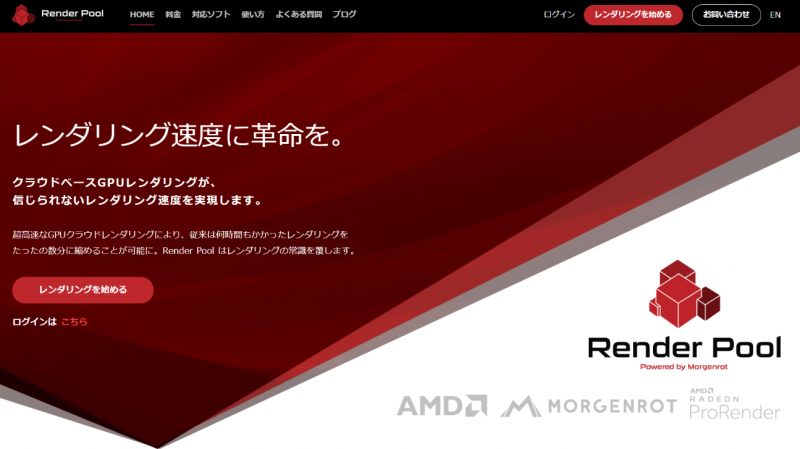
We then asked about the background leading up to the joint service development between our company and TMS Entertainment.
How did you come to know our company and Render Pool?
(Ito)The transition from analog to digital, or from paper to digital drawing, began when we asked for the cooperation of PCs in the form of AMD’s studio support.
Currently, our subsidiary, Telecom Animation Films, has 30 to 40 animators.
We asked for their cooperation in installing PCs, and at that time, they introduced us to Render Pool.
What were some of the challenges you faced?
(Ito)For example, in recent animation productions, in addition to effects such as smoke and flames from explosions, an increasing number of characters are also created using computer graphics.
In other words, “hand-drawn” and “3DCG” processes coexist in today’s animation production.
In the past, when I was the producer and Takano was the 3DCG director working on the same project, we had a very difficult experience in coordinating hand-drawn and 3DCG.
To begin with, the way of thinking is different between 2D and 3D animation, and the time axis of the work is also different.
For us 2D people, CG has the image of being able to be produced quickly.
However, from the CG people’s point of view, this is not the case.
We felt that digital technology should be utilized to resolve these points that do not mesh well, to efficiently link 2D and 3D, and to focus on visual expression, which is where the most time should be spent.
In animation production, 2D and 3D materials are finally composited.
For example, in the case of CG, a large number of scenes must be rendered in a limited amount of time to output the composite material, and the challenge was how to improve work efficiency and productivity to that point.
We are currently working on solving that problem, but for a small team like ours, it is not possible to build a server room for the renderer.
So, one option was to “try the cloud”.
Tell us about your work with Render Pool.
(Ito)We use a wide variety of 3DCC tools and therefore handle different file formats.
So we need a tool to edit them once and for all.
In other words, we needed something that would allow us to properly check the quality of the files before rendering with Render Pool.
Therefore, Mr. Morimoto of AMD and I decided to develop an intermediate tool, and we are now working on it together with Morgenrot.
(Takano)We are in the process of jointly developing “scene assembly software” that would assemble output from various software programs.
We are also discussing how to handle various formats.

(Ito)Our team needs to deliver data after rendering because we function as a studio that takes orders and also does demonstration production.
We want to create a useful tool for people involved in similar work.
(Takano)Currently, we are borrowing servers set up locally by the system engineers of each company.
In this case, it is not possible to quantify the speed.
On the ordering side, we would like to have a server that we can feel comfortable with that will give us a clear price quote.
We believe that the amount of money should be clarified in order to provide better and more work.
Also, in order to be competitive in the world, we always want to render on new hardware.
In order to cooperate there, we are in a state of development in collaboration with Morgenrot.
Since we are a video and film manufacturer, we wanted a way to create a system that could properly distribute and process these images, and that is the Render Pool that Morgenrot is developing.
That is the Render Pool developed by Mr. Morgenrot, and that is what we wanted to distribute.
I believe that Render Pool is a service that guarantees “cost” and “quality” with rendering that is visible in time.
We consider the Render Pool to be an excellent management tool.
(Takano)I think it is very good in terms of money management.
When the client side purchases points from Morgenrot, allocates the points to each subcontractor, and then can render within these points, it makes it possible for the ordering side to clarify how the money will be used.
This is a very good point.
With other services, the client is billed at a later date based on the time spent, but with Render Pool, the client can purchase points in advance, which I think is great.
Our Vision for the Future
We asked about the challenges the industry is facing with regard to software under joint software development, and their thoughts on how to solve them.
It’s not just about improving rendering time and work efficiency, but also about improving operations in the animation industry.
(Takano)If you want to improve quality, it is better to set up your own rendering server like overseas studios.
However, if you are producing a film as a commercial project, you would want to clearly manage your money.
(Ito)It is of course necessary to produce the work while guaranteeing the schedule to some extent, but since you will be able to see the end of the project, you will be able to plan properly.
Also, if you know that “XX points are needed to render this file,” you will be able to determine how to respond.
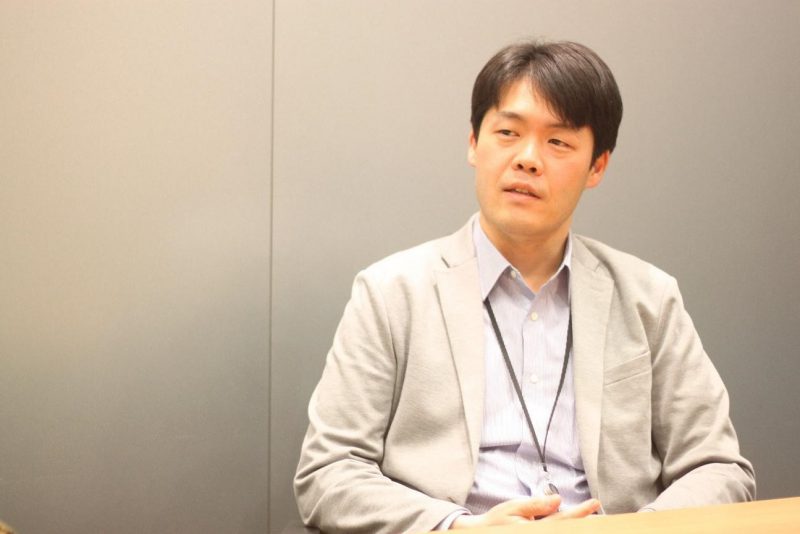
(Takano)If I were the director, I would be able to determine the duration of the rendering.
“We’ll turn the render around in the next two weeks from here. We have this many points available.” This will allow us to manage schedules and budgets that
Then we can ask each subcontractor or production manager, “Artists, please work to meet that schedule.” And then we can ask each subcontractor or production manager, “Please make sure that the artist works to meet the schedule.
“Please finish by this date. “Please have it in a renderable format. We can clarify how to make such requests.
And because we are managing the cloud rendering points, we can control the cost of the work we have produced.
(Ito)The company will be able to figure out the rendering budget for the year based on the number of items we produce.
We are in the process of researching and studying this, but we need to understand how much of a budget we will actually have.
I hope to be able to reduce costs in the industry and let it be an opportunity to introduce good products.
(Takano)Often, when CG was used, “rendering was not done in time” or “redoing was not possible”.
That is because they rely on the experience of each studio, and various things are not quantified.
Therefore, if the tools we are now developing with Mr. Morgenrot become more widespread, we will be able to better define the production flow, schedule, and the number of times and areas that can be redone.
I believe that if we can spread this kind of thinking, we can create an industry that is more comfortable to work in.
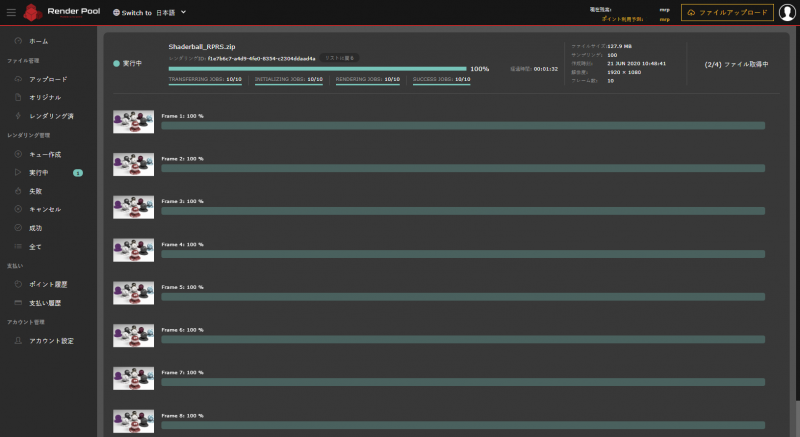
(Ito)Yes, I agree.
We have come to a point in time where we, who have been doing 2D animation in the traditional, analog way, need to manage it by using the power of digital and computer graphics.
The people who watch animation are becoming more discerning, and I think that from now on we will be required to create good works while utilizing the skills of the craftsmen and animators and following up with CG.
What do you think it takes to win the world in animation?
(Ito)In the framework of global animation, Japanese animation is only one genre.
Although I believe that Japan is still leading the world in some areas, China, Korea, and other countries are producing animation of a quality comparable to that of Japan.
To be honest, I think we are at a difficult point in the animation industry.
Then, if we were to ask what makes Japan so competitive, it might be the unique sensitivity and expressiveness of the Japanese people.
I believe that the ability to calculate and express the finest details is the only weapon left to the Japanese.
I believe that we are entering an era in which the quality of works and ideas are no longer dependent on the country of origin.
In addition, in order to compete with foreign companies, I think it is important to have an attitude of trying to communicate to foreign countries.
(Takano)I also strongly believe that we are missing out on opportunities to communicate to the world on a daily basis.
I would like to break through the mindset before the issue of winning or not winning in the world, because the characters and storylines are set up to “just be popular only in Japan.
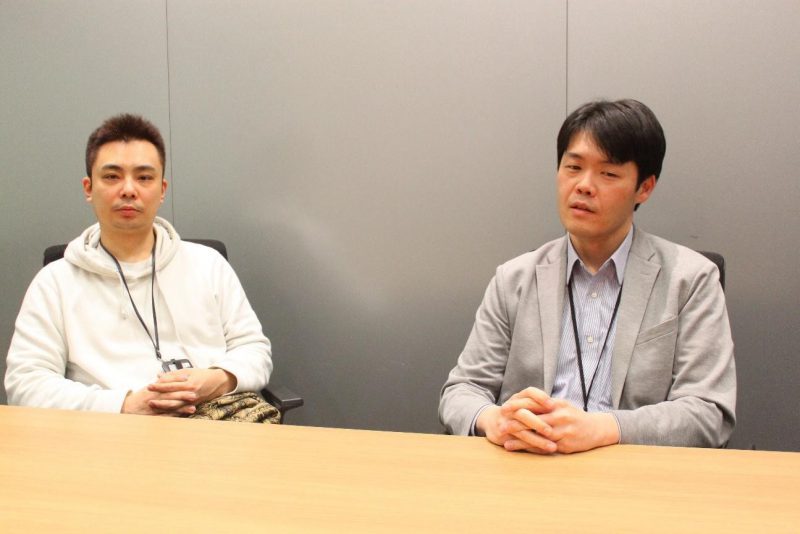
(Ito)Recently, more and more companies are expanding into countries such as Southeast Asia, and it is not unusual to hear of CG companies establishing subsidiaries in Southeast Asia.
On the other hand, in Japan, it has become commonplace to have China as the prime contractor and Japan as the subcontractor.
When that happens, we, as the prime contractor, have to consider the possibility of working with people overseas to produce high quality products with a small number of elite workers.
At such times, it would be good if Japan could possess technologies that the rest of the world does not have as a weapon.
It would be best if we could work with TMS to make Render Pool a world-class tool for the animation industry.
(Takano)Yes, we do.
In order to productively create content that can be viewed by people around the world, you need a solid rendering server.
So a rendering server from a small or medium-sized company alone is not enough to cross over to the rest of the world.
I feel that the industrial structure is old and there are many things that need to be changed.
(Takano)That’s right.
If we use the word “industry,” it is similar to the Industrial Revolution.
For example, when horses were the norm, no one wanted automobiles.
However, the need to travel farther and more reliably led to the emergence of the car.
Then the steam locomotive was created, and productivity increased rapidly.
I imagine that we are doing something similar to that.

Japan is no longer the world’s preeminent country in terms of technology and ideas.
The industrial revolution brought about by Netflix has made it easier for us to see animation, or ideas, from all over the world.
A decade ago, it was impossible to watch all European movies.
Now, however, it is easy to watch all of them, even foreign dramas.
In the case of Southeast Asia, movies could not even be seen without coming to Japan.
Now, however, people in their 20s, who are younger than us, can easily watch movies through Netflix in any country in the world.
So there is little difference in the ideas and content they receive, no matter what country they live in.
Therefore, we have to confront countries around the world when we produce our works, and I believe that what Japan overwhelmingly lacks in this regard is productivity.
We are currently working with Morgenrot on this project in the hopes of setting the groundwork for this.
Currently, the quality of RPR itself, Radeon ProRender, is focused on physical and realistic objects, but we would like to incorporate stylized expressions and comic book styles, so that we can produce various styles of work in a productive manner.
(Ito)In the future, we will not be able to compete with the rest of the world unless we have good communication with our technicians in order to express ourselves in our works.
In other countries, such technicians create their own tools, but Japan is not able to have such technicians.
In that case, the only way to achieve this is for people with the same mindset to get together and make it happen.
Although the focus tends to be on the artwork, it is more important how to create the tools to create the artwork by oneself.
It is also important to show actual examples. If it is known that “this work was produced using this system,” Japanese people who like to “reimport” may think “this looks like it could be useful.
Unless we can show that “this video was produced within such a cost and time frame,” we will not be able to convince them to use it.
Also, we need to create time to think and enjoy the work.
It would be best if we can create an environment where people can focus on their creative work instead of worrying about the equipment.
(Takano)Yes, I agree.
I think Japan should do more to improve the environment for creators.
What features do you think Render Pool needs to win the world?
(Takano)It would be a feature that could increase productivity.
Is it the image of increasing work efficiency?
(Takano)No, it is the part where you can see the time that needs to be created.
Radeon ProRender is a special format called “.rpr” file.
Unlike CPU renders, GPU renders are blurry, and the “.rpr” format was created to suppress that blurring.
That’s what we want to sell and have the world recognize.
The output from it is up to the creator.
I think the most important thing is stability and the fact that the renderer is capable of producing materials that can be used in a variety of artistic styles.
(Ito)We are currently working together to develop something that will answer the needs of the people who actually do the production, as well as the needs of the various companies that must be commissioned to do the production as the source of orders.
Summary
We interviewed two members of TMS Entertainment, Inc. regarding the software being jointly developed by our company and TMS Entertainment, Inc.
We hope you were able to get a sense of the challenges facing the Japanese animation industry, how they can be solved, and what they think Japan should do to compete with the rest of the world.
Render Pool, a GPU cloud rendering service, is available for free user registration.
The software (scene assembly tool) is scheduled to be released in August 2020.
We will announce the news on our website and in a press release.